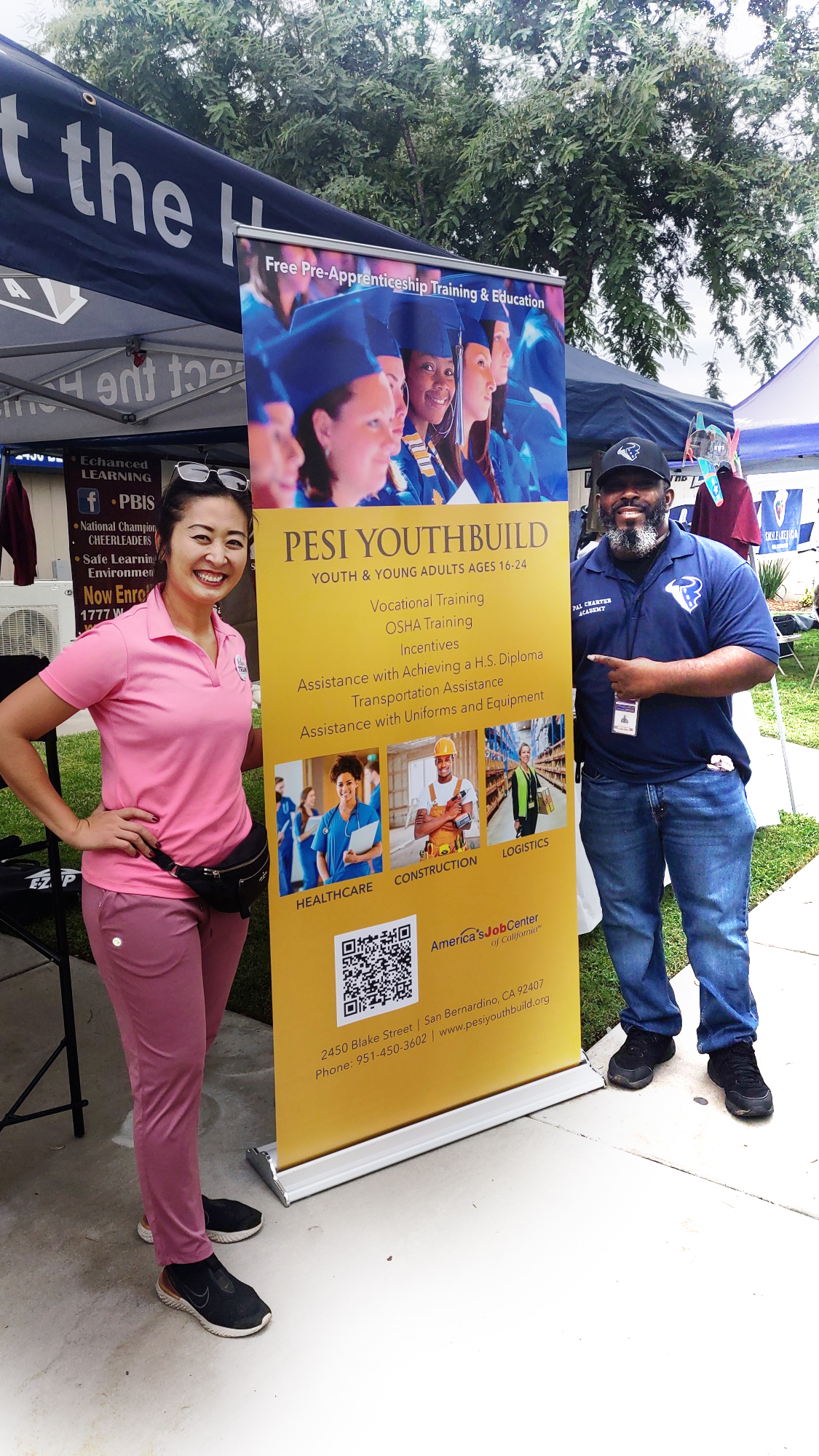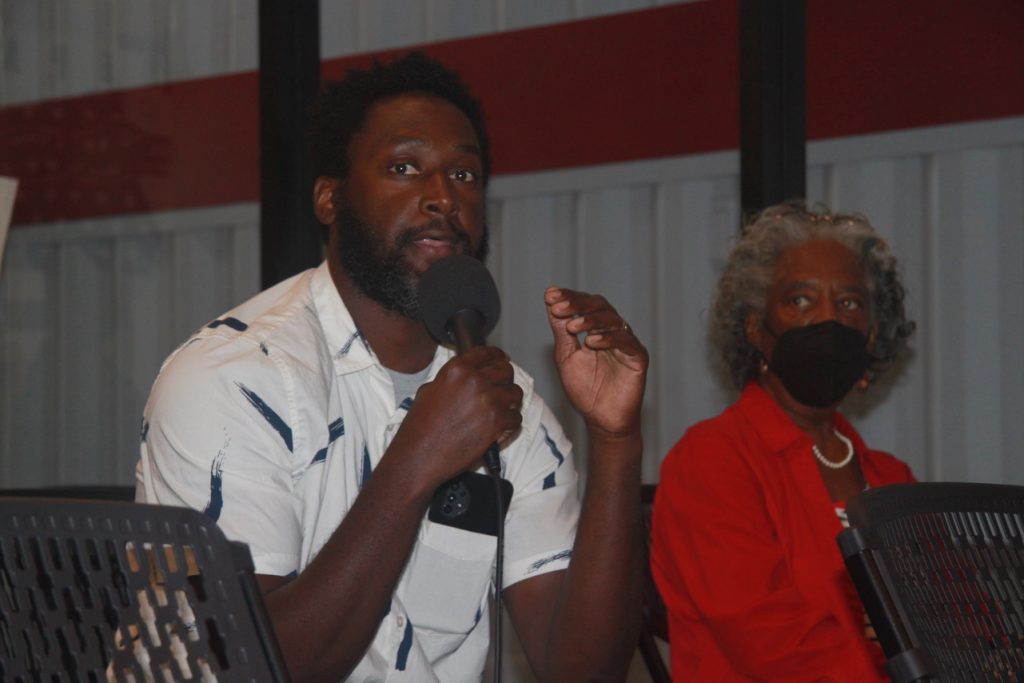
The I.E. Live Market Nite group connected the whose who of the Inland Empire. They had dignitaries from all over the I.E., such as Kimberly Calvin, Councilwoman for the 6th Ward, Mayoral candidate Helen Tran, Chief Paulino from San Bernardino City Unified School District, Representatives from Supervisor Joe Baca Jr’s office, and Pam Montana, President of the local Kiwanis Club, and Board member of PAL Charter Academy, just to name a few.
The event was held at the PAL Center one of the longest operating agencies in Muscoy and has a 38-year community tenure in the I.E. Founder Dr. Mildred Henry of the PAL Center stopped by to support the event and promote her newly released book “From the Ashes, I Rise. “I’m so proud of Mr. Radden and his I.E. Live Team for bringing this event to the PAL Center and the Muscoy community Dr. Henry stated”.
The event played host to well over four hundred families and kids. I.E. Live Event Coordinator, Jasmine Jefferson, owner of I.E. Pop Up Events said, “It was just a great day for our community. We gave away free shoes, backpacks, and gifts and raffled off prizes such as Beats by Dre, headphones, a TV, and Clipper tickets.” Tickets were to a game against the Lakers. They were donated by the president of the Knockitoff Youth Foundation, Robin Mckinnon known as Malibu. She was also the host of I.E. Live Event. The music and production were done by DJ Muda. He is known as one of the top DJs in the Inland Empire.
Sistas Making a Difference, delivered a powerful punch to the day by giving out hundreds of free shoes. Founder Ronnie Miller said, “it’s always great when you can put smiles on children’s and families faces. Giving back to the community is what this event and the Founder is all about!” Founder of the I.E Live event, Dwaine Radden Sr. said “music, food, sports, and recreation is always a good recipe for a great event. They had a game truck, jumper, and a water slide for the kids.
Radden assembled a powerhouse group of organizations to be a part of the I.E. Live Market NiteTeam. PAL Center, Sistas Making a Difference, Knockitoff Youth Foundation, 20/20 Vision, Talon36.com, I.E. Pop Up Events. He said “We all had a seat at the table to create this history-making event. Our mission was to create unity in the I.E. Community. We have been plagued with countless murders of men, women, and children throughout San Bernardino and in the I.E. We must find ways to reunify our community if we want to restore the I.E. greatness we once had!”
R&B singer Latrice Kristine of the I.E. was the headliner, and she was accompanied by some dynamic performances by Dre-Lamonte, Kam, and Cornell Lamar, all from the Inland Empire. Vendors came from all over the area to be a part of this event. Reggie Dixon owner of Notorious R.I.B. from Riverside said “it must have been a pretty good day, I’m out of food.” I.E. groups also, partnered with the local Amateur Athletic Union (A AU) Football and Cheerleading organization which conducted plenty of foot traffic for the event. AAU leader MaishaTurner said, “it was a good day. It felt like a big family reunion.”
The next event will be held on November 5th, 2022 at the PAL Center, 2450 Blake Street. For more information on how you can be involved with the upcoming event. Call 909-314-6623 or email them at ielivemarketnite@gmail.com.
Our weekly coverage of local news in San Bernardino County is supported by the Ethnic Media Sustainability Initiative, a program supported by California Black Media and Ethnic Media Services to support minority-owned-and-operated community newspapers in California.
 Westside Story Newspaper – Online The News of The Empire – Sharing the Quest for Excellence
Westside Story Newspaper – Online The News of The Empire – Sharing the Quest for Excellence

